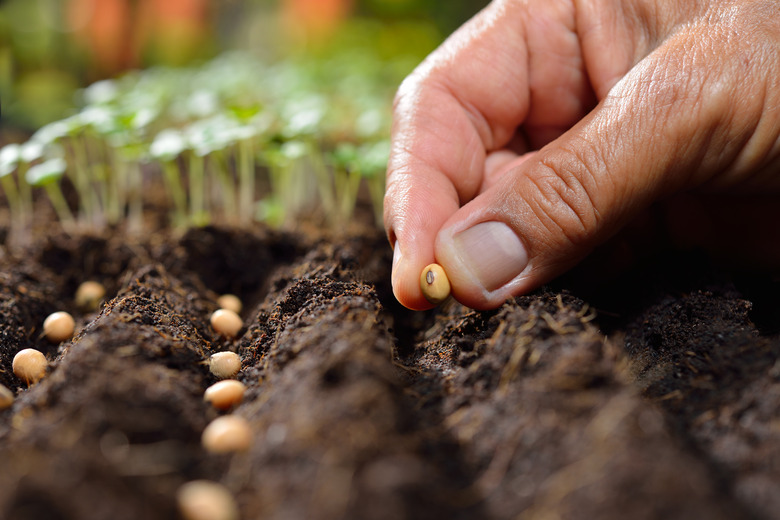How To Grow A Plant From A Bean As A Science Project
Growing a bean plant is a simple science experiment that can be accomplished with a very little preparation. Additional variables can be used to expand the experiment. Determine how much sunlight is optimal by placing plants in sun, partial sun and dark to grow and measure the growth needs. Test the optimal amount of water needed or the best depth to plant at by changing these variables in the experiment.
Step 1
Fill the cup three-fourths full of potting soil. If the experiment is testing other variables such as sunlight, water or temperature, fill enough cups for each variable. Create one cup for a control.
Step 2
Press beans into soil approximately 1 inch apart to a depth of 2 inches for the control cup. Additional cups can be planted according to the variables being tested.
Step 3
Water thoroughly and place in a sunny spot. Monitor beans for growth.
Things Needed
- Clear plastic cup
- Potting soil
- Bean seed (2 per cup)
- Marker
- Water
TL;DR (Too Long; Didn't Read)
Using a clear plastic glass will allow students to better observe the growth of the roots. Plant the seed close to the edge of the glass for better viewing of root development.
Cite This Article
MLA
Marcotte, Dawn. "How To Grow A Plant From A Bean As A Science Project" sciencing.com, https://www.sciencing.com/grow-plant-bean-science-project-5701557/. 22 November 2019.
APA
Marcotte, Dawn. (2019, November 22). How To Grow A Plant From A Bean As A Science Project. sciencing.com. Retrieved from https://www.sciencing.com/grow-plant-bean-science-project-5701557/
Chicago
Marcotte, Dawn. How To Grow A Plant From A Bean As A Science Project last modified August 30, 2022. https://www.sciencing.com/grow-plant-bean-science-project-5701557/
